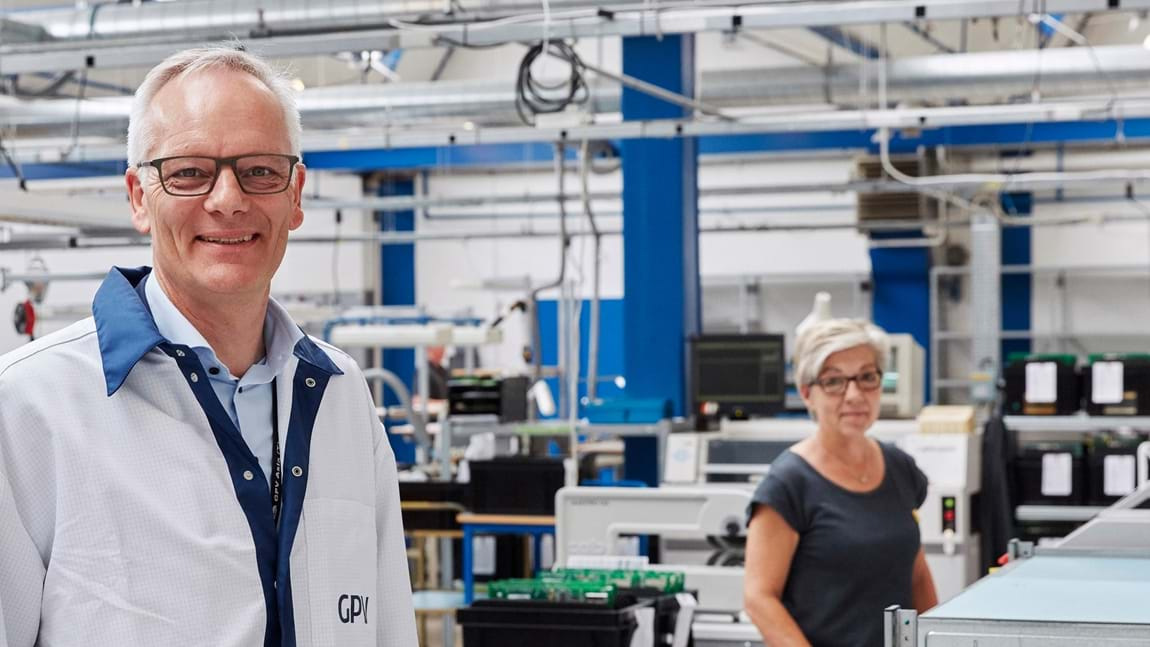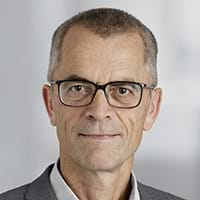CEO at GPV: Danish conditions are the best in ten years
Digitalisation is paving the way for electronics in all products. CEO at GPV Bo Lybæk has not seen conditions for growth in Denmark this good in ten years. In four years, GPV plans to be twice as big.
A minicube that can handle 16 DNA tests simultaneously from Xtel. A lamp socket that measures temperature, sound and humidity from Develco. Or a sensor for your shirt that tells you whether you’re getting enough sunlight each day from Prevas.
These are examples of some of the modern electronics currently on show at DI’s headquarters in Copenhagen. All three are products of the Danish electronics industry, which plays a key role in the digitalisation of all products.
The industry is growing, and there are good conditions for this growth to continue – if, that is, we are able to obtain the competent workforce required and the government provides supportive tax policies, says CEO at Denmark’s largest specialised electronics manufacturer GPV, Bo Lybæk.
Denmark can take part
“There is no question that today’s focus on digitalisation increases the need for electronic hardware. This is a development that Denmark can be part of if we remain competitive,” he says.
Bo Lybæk also serves as chairman of the committee for Danish electronics at the Danish ICT and Electronics Federation.
“It used to be the case that production had to take place in China. Today production and development are increasingly based in the same place, so it makes sense to keep production in Denmark,” he says.
Twice as big in two years
GPV is also currently undergoing rapid growth. The firm has 1,400 employees, a turnover of DKK 1.2 billion and manufactures 10 million products annually, which are sold to a wide range of industries in 40 countries. Among the more spectacular of its range of 6,500 products is a surveillance system that ensures that airplanes land safely in bad weather at airports across the globe.
In 2022 the goal is for GPV to be twice as large. This growth will take place all over the world, but ideally, it will also create more jobs in Denmark. Some of this progress will be ensured through acquisitions.
In the ten years I have been the head of GPV, conditions for the company’s factories in Denmark have not been as good as they are now. Bo Lybæk, CEO, GPV
“In the ten years I have been the head of GPV, conditions for the company’s factories in Denmark have not been as good as they are now. In Denmark, we have around 250 employees of several nationalities. And it isn’t impossible that this number will grow. But this of course depends on where and how we grow, and what makes most sense in relation to our customers,” explains Bo Lybæk.
According to Statistics Denmark, activity in electronics enterprises more broadly has grown since 2009. In 2015, revenue tied to electronics reached approximately DKK 144 billion, of which 75% was exports. In total, the sector employs over 41,000 workers. The sector’s products are often invisible to the public eye, because they are seldom aimed at the individual consumer but instead used in technical instruments and machines.
Two crucial factors
According to Bo Lybæk, there are two crucial factors if we are to continue the success and maintain Danish competitiveness:
1) Education of enough competent workers. This applies to both higher science educations but also industrial technicians and others who take care of production itself.
2) Better investment climate. This involves ensuring better depreciation rules for investments in machinery and equipment in order to counter competition from other countries.
Better investment opportunities
The Confederation of Danish Industry (DI) is fighting to improve the investment climate.
“Following a proposal from DI, the government has decided to review depreciation rules for IT and telecommunications equipment. In order promote investments in digitalisation and new technologies, it is important that tax depreciation rules are adjusted to suit today’s digital developments,” say Director Lars-Frelle Petersen, the Danish ICT and Electronics Federation.
He emphasises that electronics and digitalisation go hand-in-hand, because innovations such as the Internet of Things (IoT), big data, drones and robots are all dependent on electronics. Electronics are central to the manufacturing industry, but also to many others. This prepares the ground for major business opportunities.
“Electronics companies are in a strong position within areas where Denmark is generally strong, including medtech, health, sustainability, robots, measuring instruments, marine technology and communications technology. Hence, we have a solid fundament,” says Lars-Frelle Petersen.
He further notes that with export shares of 75%, Danish electronics companies are also present on international markets where the demand for electronics will rise.
FACTS
Danish Electronics Industry Exhibition
Exhibition period:
30 May - 6 August 2018
Monday - Friday 8-17
Location: Industriens Hus
H.C. Andersens Boulevard 18, 1787 Copenhagen V

